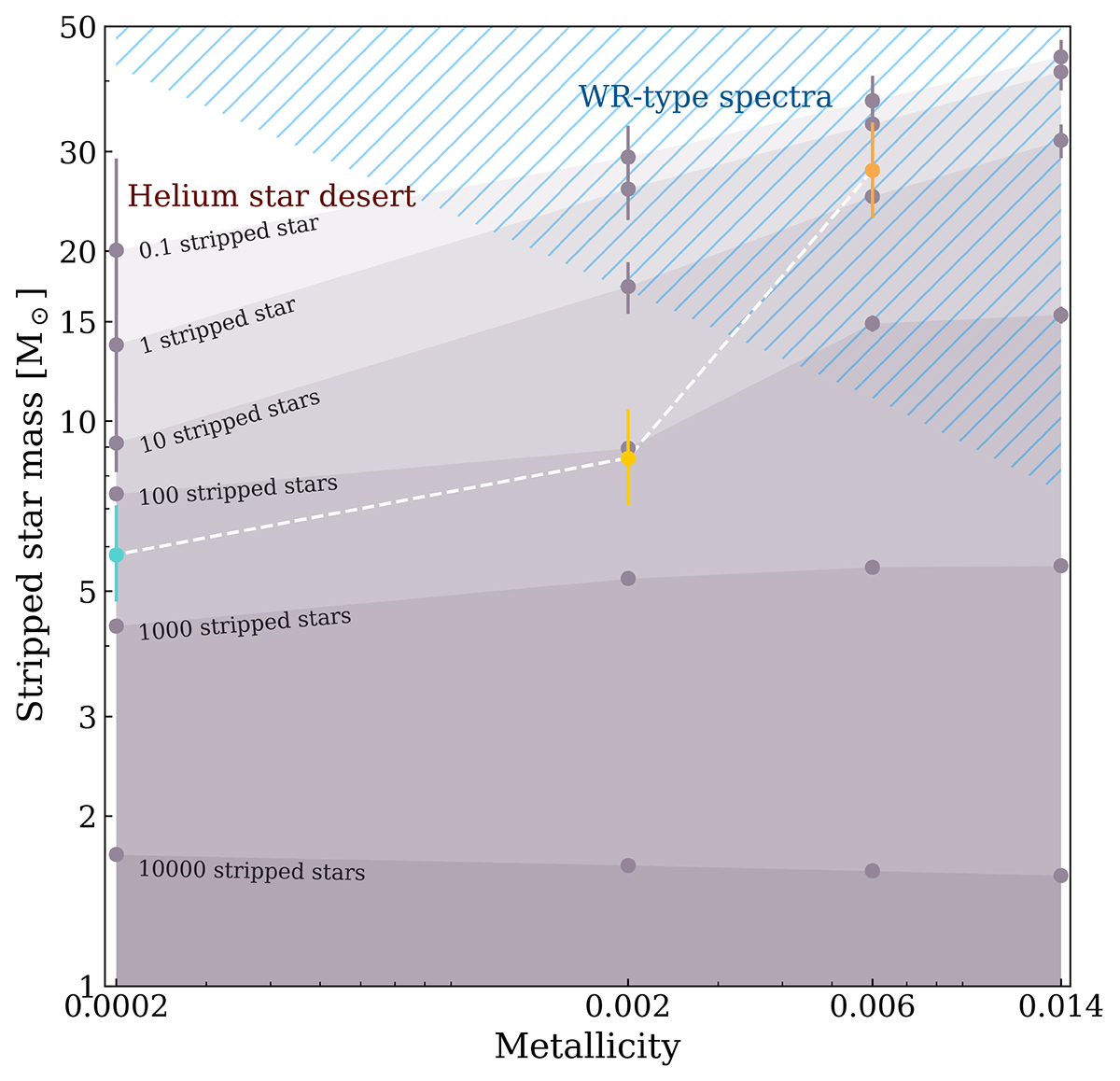Fig. 6.

Download original image
Contour plot depicting the number of hot stripped stars we expect for various metallicities above various masses, assuming a constant star formation rate of 1 M⊙/yr. Each contour is labeled by the expected number of hot stripped stars with higher mass than the contour. At the low-mass end, the contours are close to horizontal, indicating that the formation efficiency of low-mass hot stripped stars is not affected by metallicity, but a metallicity dependence appears with increasing mass as higher-mass stripped stars are able to form at higher metallicities but are missing at lower metallicities because of late expansion. We use blue hatching to mark the general regime where WR-type spectra are expected to occur (Shenar et al. 2020). The low-metallicity (Z ≲ 0.002), high-mass (Mstrip ∼ 12 − 30 M⊙) region is practically devoid of both WR phenomena and hot binary-stripped stars, creating a “desert” of helium stars. The locations of the drops identified in Fig. 4 are indicated in their corresponding colors and connected by a white dashed line.
Current usage metrics show cumulative count of Article Views (full-text article views including HTML views, PDF and ePub downloads, according to the available data) and Abstracts Views on Vision4Press platform.
Data correspond to usage on the plateform after 2015. The current usage metrics is available 48-96 hours after online publication and is updated daily on week days.
Initial download of the metrics may take a while.


